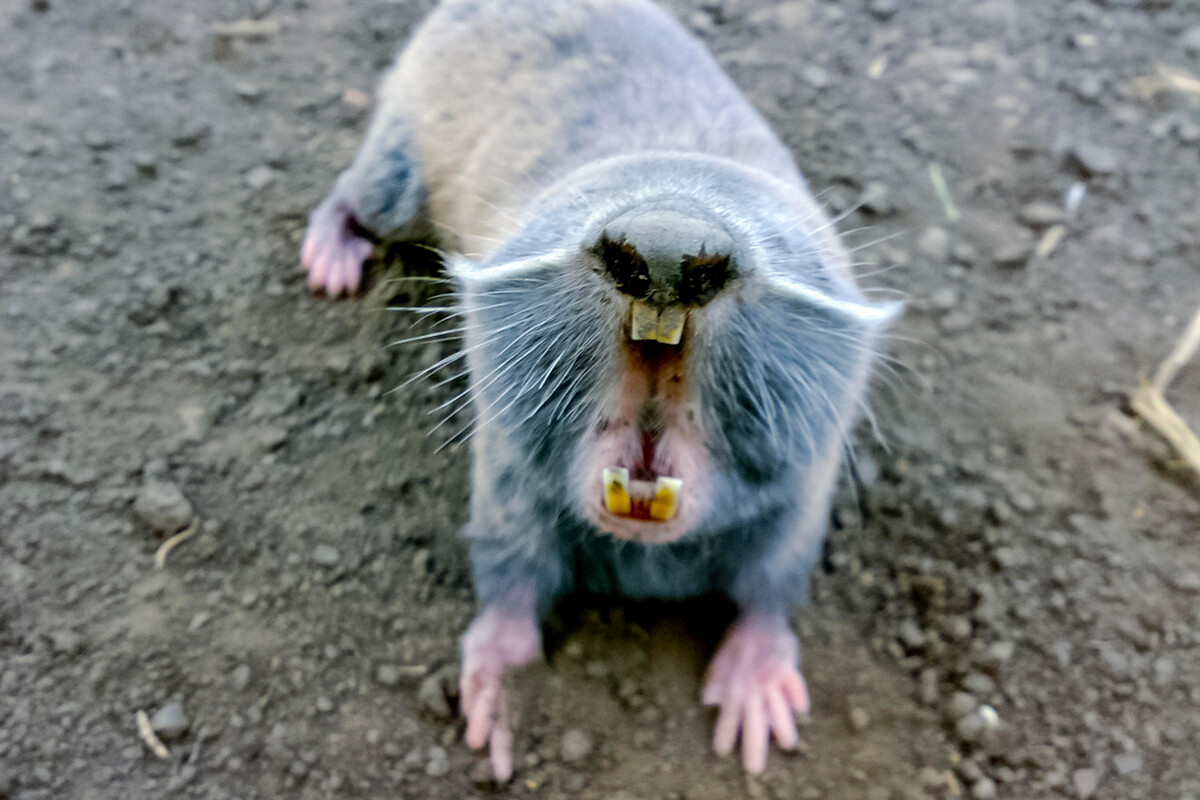
5 facts about the creepiest Russian mole rats from the underground

Most of the Spalax rodents, or slepyshi (“the blind”) inhabit Eastern Europe and Asia. In Russia, they live even in permafrost areas.
1. The largest mole rats
 Blind mole-rat, Black Sea area, 1837.
Blind mole-rat, Black Sea area, 1837.
Two species of mole rats live in Russia: the greater (or common) and the giant one. Both species are larger than their relatives: the greater Spalax reaches a weight of 700 grams, while the giant Spalax can grow more than 1 kg. This is 10 times bigger than an average mole!
The greater mole rats are widespread in Volga Region, the North Caucasus and the southern steppes of Russia. Giant ones are found not only there, but even in the mountainous areas of the Urals, including permafrost lands. Some scientists distinguish them as a separate species of Uralian Spalax.
2. It doesn’t need eyes

When looking at it, it seems that the mole rat just closed its eyes, but there are no eyes at all, although there is a place where they might be placed.
It does not need eyes, because it lives underground all the time, feeding on plant roots. All it needs to live are ears, hidden under its gray fur, and huge front teeth, which it uses to dig and eat.
3. Architect by nature

And imagine that this beast spends practically all its life underground, digging holes. They live individually and each mole rat digs not just one burrow, but a whole system of subterranean branching passages. Most often, their holes consist of two levels; the upper one is 20 centimeters deep; here mole rats collect their food and bring them to the storages on the lower level at the depth of 3-4 meters. On average, one animal makes up to 10 kg of reserves by winter. The holes that are formed after such digging are called ‘slepyshiny’.
4. You’ve most likely never seen one

Blind mole rats very occasionally go to the ground. Sometimes, dogs can dig their burrows and you will be extremely surprised to find such an inhabitant in your garden!
And now, imagine that a population of up to 20 mole rats can live on just one hectare of land, with each digging large passages and entries and exits. They usually don’t live on plowed lands, as they avoid the noise and vibrations of agricultural machinery, but they can settle in a garden. And then you can say goodbye to your harvest of potatoes, carrots, onions - oh, and your tulips, because they will eat it all!
5. Some are protected

The greater Spalax are an incredibly common species. Garden enthusiasts are constantly fighting them and often fail with it. They are not afraid of anything except noises, so even now they only use devices that make sounds and vibrations.
Meanwhile, the giant Spalax is rare in nature (and gardens) - they are even listed in the Red Book of Endangered Species.
Of course, you should not catch or try to tame them - like all wild animals, they do not like people, can bite and be carriers of dangerous diseases.













